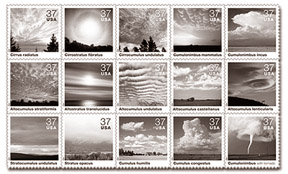|
observer |
|
|
|
|
|
OTHER LINKS |

|

|

|
The history of stamp collecting
The first postage stamp, commonly referred to as the "Penny Black", helped eliminate a number of problems that the British Post Office had experienced up to that date. The idea of prepaying for delivery of mail was so successful that by 1860 more than 70 countries were using postage stamps. Stamp collecting began at the same time that stamps were first issued, and by 1860 included thousands of collectors and a number of local merchants catering to their desires. Originally referred to as "timbromania" ("stamp madness"), it swept through Europe and quickly spread to the European colonies worldwide. How stamps were collected was as varied as the people that collected them. One Parisienne was supposed to have wallpapered her bedroom with sheets of an early issue from France - a stamp issued in sheets of 100, and that now sells for up to several hundred dollars each! As more and more people began collecting stamps, businesses specializing in selling just stamps began to appear. By 1880, there were dozens in every major country.
Stamp collecting is less popular a hobby today than it was in the past, but an estimated 25 million people collect stamps in the United States alone. Worldwide, there are more than 200 million collectors. They are supported by more than 125,000 dealers, supply manufacturers, catalogue and other print media publishers, and thousands of clubs and associations. Stamp dealers sell millions of dollars' worth of stamps and supplies annually. There are more than 4000 stamp shows and exhibitions in the United States each year, and large international exhibits can attract more than 100,000 visitors a day. Many stamp collectors arrange their collections according to the type of storage they use for those collections. Most collections are housed in commercially-manufactured albums, and the collectors arrange their collection - in fact, frequently limit their collections - according to the arrangement of the particular stamp album they use. Others make their own album pages, and arrange their stamps in a way that pleases them. This type of collecting is becoming extremely popular with the advent of modern personal computers, which allow greater flexibility in page layout and design! All of these collections have a few things in common: someone took a great deal of time and trouble to find out what material was available, and determined how to organize that material in a way to express a central theme.
People who collect stamps representing a single theme or function are called "topical collectors", and their theme is referred to as a "topic". Such people may arrange the individual stamps within a topic by sub-topics. For instance, a collector of birds on stamps may break down their collection by species, or group them by the type of habitat they live in, the area they're natural to, or divide them by some other grouping. Such a display is much more interesting and informative than one that has the stamps arranged haphazardly, with no identifiable characteristics. Many collectors today collect the stamps of a particular country or group of countries, and arrange their collections according to the albums they use. Others collect stamps that reflect a single topic or group of topics, and either arrange the stamps according to the album they own, or they create their own album pages and arrange the stamps on them to please themselves. It doesn't matter what an individual collects, or how they arrange their collection - a collection, after all, is created to satisfy the individual, not some arbitrary rules or standards. The concepts expressed in the example above aren't "carved in stone", but they do provide some very good guidelines on how to change an ordinary accumulation of similar items into a unique expression of the individual and their time. |
 Great Britain issued the first adhesive postage
stamp to prepay for the delivery of mail on May 6, 1840. Postage stamps
were the idea of Sir Rowland Hill, as part of Great Britain's
introduction of standardized postal rates.
Great Britain issued the first adhesive postage
stamp to prepay for the delivery of mail on May 6, 1840. Postage stamps
were the idea of Sir Rowland Hill, as part of Great Britain's
introduction of standardized postal rates.  Stanley Gibbons, Ltd., founded in 1856 and now located in London,
England, is the oldest continuously operated business to specialize in
selling postage stamps and supplies. The first stamp albums were printed
and sold in the early 1880's. Copies of these albums can still be found
from time to time.
Stanley Gibbons, Ltd., founded in 1856 and now located in London,
England, is the oldest continuously operated business to specialize in
selling postage stamps and supplies. The first stamp albums were printed
and sold in the early 1880's. Copies of these albums can still be found
from time to time.  For most worldwide stamp albums, stamps are arranged according to the
issuing country, and then usually chronologically, for either all of the
stamps issued, or for each group by type, within each country.
For most worldwide stamp albums, stamps are arranged according to the
issuing country, and then usually chronologically, for either all of the
stamps issued, or for each group by type, within each country. 







